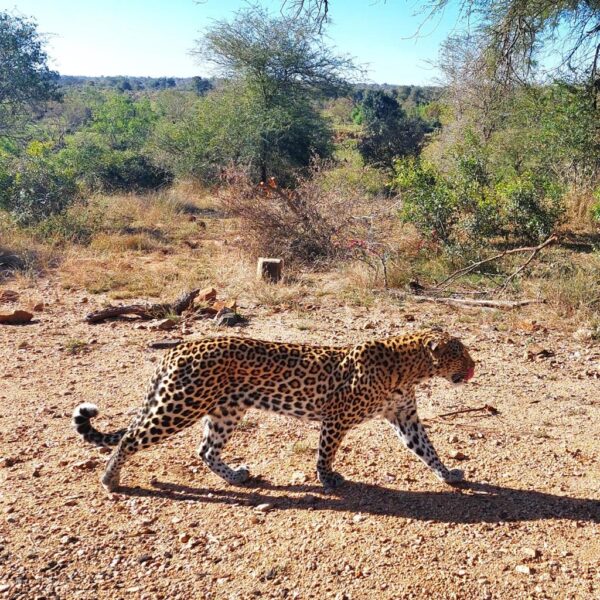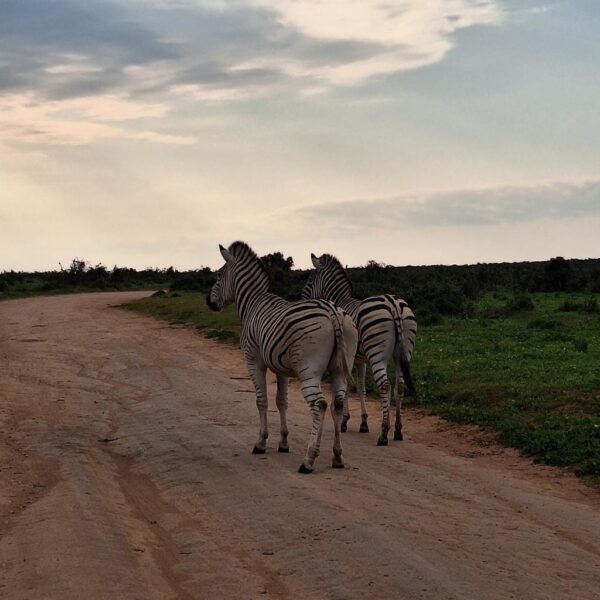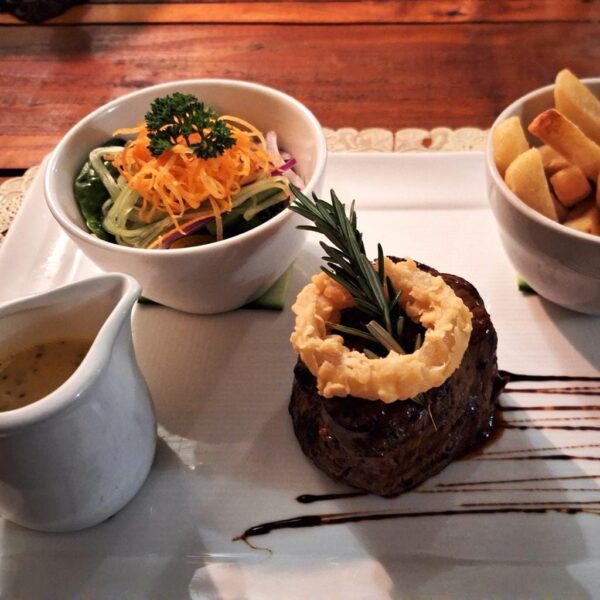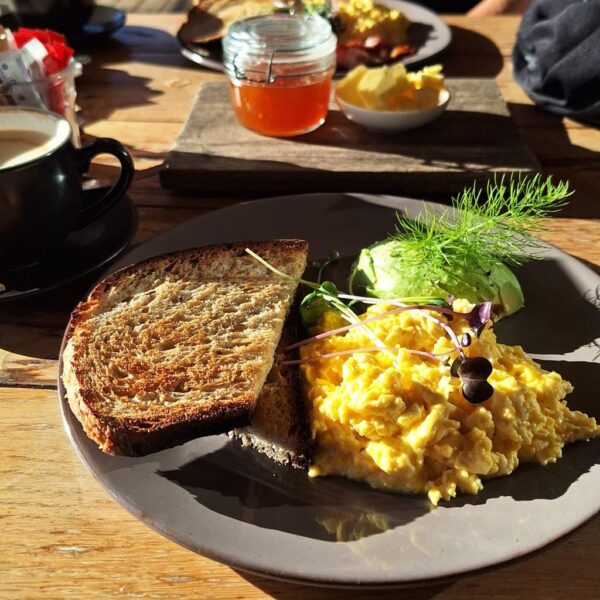Travel Tips South Africa: 10x the Best Tips!
In the summer of 2023, as part of our world trip, we traveled through South Africa. In our opinion, it’s definitely a country that deserves a spot on your bucket list! Like any foreign country, South Africa has its own customs and traditions. There are also a few things that are better to know in advance! Below we’ll give you all the answers about the 10 best travel tips South Africa, fully based on our own experiences.


1. What about Tips?
South Africa is generally much cheaper than Europe, but tips are still expected here and there, even if they’re small. In restaurants, a 10% tip is common (based on our experience). You’ll usually get a pen with your bill so you can write in your own tip amount. You’ll also encounter parking attendants at many parking lots. They are often already directing you to a free parking spot. They will watch your car and expect a small tip, usually around 5 to 10 rand. Sometimes they ask for it upfront, but usually after you return. It’s also common to tip at gas stations. They’ll fill up your car, clean the front windows, and ask if they can do anything else, such as checking tire pressure or oil levels.
2. Is South Africa Safe?
This is probably the most common question when it comes to a road trip through South Africa. Unfortunately, South Africa, especially the larger cities like Cape Town and Johannesburg, doesn’t have the best reputation when it comes to safety. To be honest, we weren’t fully at ease before we arrived. You often read that it’s better to keep your phone in your pocket, never leave anything in the car, and always lock your rental car’s doors and windows. Let alone exploring a city on your own or going out at night.
We started our trip very carefully but soon realized that it wasn’t as bad as it seemed. South Africa’s history is still very visible today, and that’s why there is a clear divide between the rich and the poor. The streets look different, especially if you only have Western Europe as a reference. But different doesn’t mean unsafe, as we found. We visited Johannesburg and Cape Town and explored the country ‘on our own’ with a rental car. Of course, you still need to stay alert, but we never ran into any problems.
Tip: rent your car at Sunnycars!
3. Do They Drive on the Left in South Africa?
This is probably one of the best in the list of travel tips South Africa: a rental car is a must! They drive on the left here, but don’t let that stop you! It was our first time driving on the left, and we found it really easy. Apart from a few wiper issues and reaching for the switch on the door, we got used to it very quickly, even in Cape Town!
There are a few things to be aware of. Most of the Garden Route consists of single-lane highways where the speed limit is 120 km/h. If someone wants to pass, you’re expected to pull over to the shoulder. But only do that if you have a clear view, as you’ll often encounter cyclists and pedestrians on the shoulder—don’t be surprised to see monkeys too. People sometimes cross the roads as well. Especially around the townships, you’ll see more people walking along the road. Extra caution is advised here. The route from Johannesburg to Kruger Park mostly consists of a two-lane toll road.
4. Can I go on Safari by Myself?
Yes, absolutely! It’s actually really fun to go wildlife spotting on your own, and it saves you the cost of a ranger. We didn’t find it stressful or unsafe at all. During our road trip, we visited Addo Elephant Park and Kruger Park. We found Addo to be the most accessible for a first safari because the park is a bit more compact. But Kruger is also perfectly manageable. You don’t need to rent an expensive 4×4 either. Our small rental car got us everywhere, both on paved and unpaved roads. So definitely go on safari on your own, though a game drive with a ranger is also a fantastic experience!


5. What Kind of Plug do you Need?
A universal plug won’t work in South Africa, as they use a different type with three fairly large pins. Do you need to buy one in advance? We don’t think so. Everywhere we went, we found European-style outlets (though often only for flat plugs). The only time we couldn’t charge was during the two nights we spent in Kruger Park, but we managed just fine with a power bank. And if you really can’t make it work, you can find an adapter in most supermarkets.
6. What About Payments in South Africa?
Payments are made with South African rand (ZAR). When it comes to payments, South Africa is quite modern, and almost everywhere you can pay (contactless) with your card. However, if there’s a power outage during load shedding, it might not work. So, it’s a good idea to carry some cash as well (and of course, a credit card is useful as a backup, though it’s almost always the most expensive payment option). Keep in mind that the bank may charge a small extra fee for transactions outside of Europe, so make sure you have international payments enabled!
Tip: we use a creditcard from Revolut.
7. What Kind of Meals can I Expect?
South Africa offers a lot of variety when it comes to food. If you have an apartment, you can easily cook Western meals, as supermarkets offer a wide range of products. There are also many types of restaurants available. We always try to eat locally when traveling, and it’s usually very tasty! To minimize the risk of infections, we typically ask for recommendations at our accommodations. For example, we had a delicious three-course meal at Drostdy restaurant in Swellendam. When on a tour, we always eat along with the group, and we’ve never had any issues. In Soweto, for instance, we had Kota for lunch!
If you have an accommodation with breakfast, there’s a good chance it will include bacon and eggs with toasted bread and apricot jam. We also found the coffee to be exceptionally good. Think Italian-quality cappuccino. As for whether the tap water is drinkable, we’re still not entirely sure, but we occasionally drank straight from the tap and never had any issues. Of course, you can always boil the water or bring a bottle with a water filter for peace of mind. We used one of the bottles from Water-to-Go.


8. Hey, How are You!
In general, South Africans are really friendly. Whether you’re checking out at the supermarket or arriving at your accommodation, you’ll probably be greeted with “Hey, how are you?” It’s not meant to be an invitation for a long conversation, but greetings are a bit less direct than what we’re used to in the Netherlands.
9. How to Use Your Mobile Phone?
Using your own SIM card to call and use the internet outside of Europe is incredibly expensive, so don’t do that! Just buy a local SIM card. At larger airports, you’ll find kiosks selling them. In Cape Town, we bought a SIM card with 100GB from MTN for about 40 euros. Within five minutes, it was all set up, and we had internet access. By the way, that was way too much data for us, and we ended up using only around 30GB in three weeks. It’s also handy to bring an extra (old) phone. This way, you can leave your own SIM card in your regular phone and don’t have to hand over your personal phone. We always bring a reset phone with no personal information on it. We simply use it as a hotspot, and that’s it.
Tip: You can also use an e-sim from Airalo. With the code MEIKE4854 you’ll receive a nice discount!
10. Is Afrikaans Similar to Dutch?
Wherever we went, people spoke good to very good English. However, sometimes when they realized we were from the Netherlands, they would suddenly start speaking Afrikaans. It’s quite similar to Dutch (with some really funny words). Put the radio on in the car, and you can follow the news easily. But be warned, that also means they can understand you! By the way, we learned from locals that only about 7% of people speak Afrikaans. During our tour in Soweto, we sadly learned that the language was more or less imposed during the apartheid era. So, while we, of course, can’t help that, it’s not something we feel particularly proud of.
We hope you enjoy your trip to South Africa. Looking for some other best travel tips South Africa? Check out our Google Maps travel guide South Africa with all our stops, restaurants, accommodations and more!



